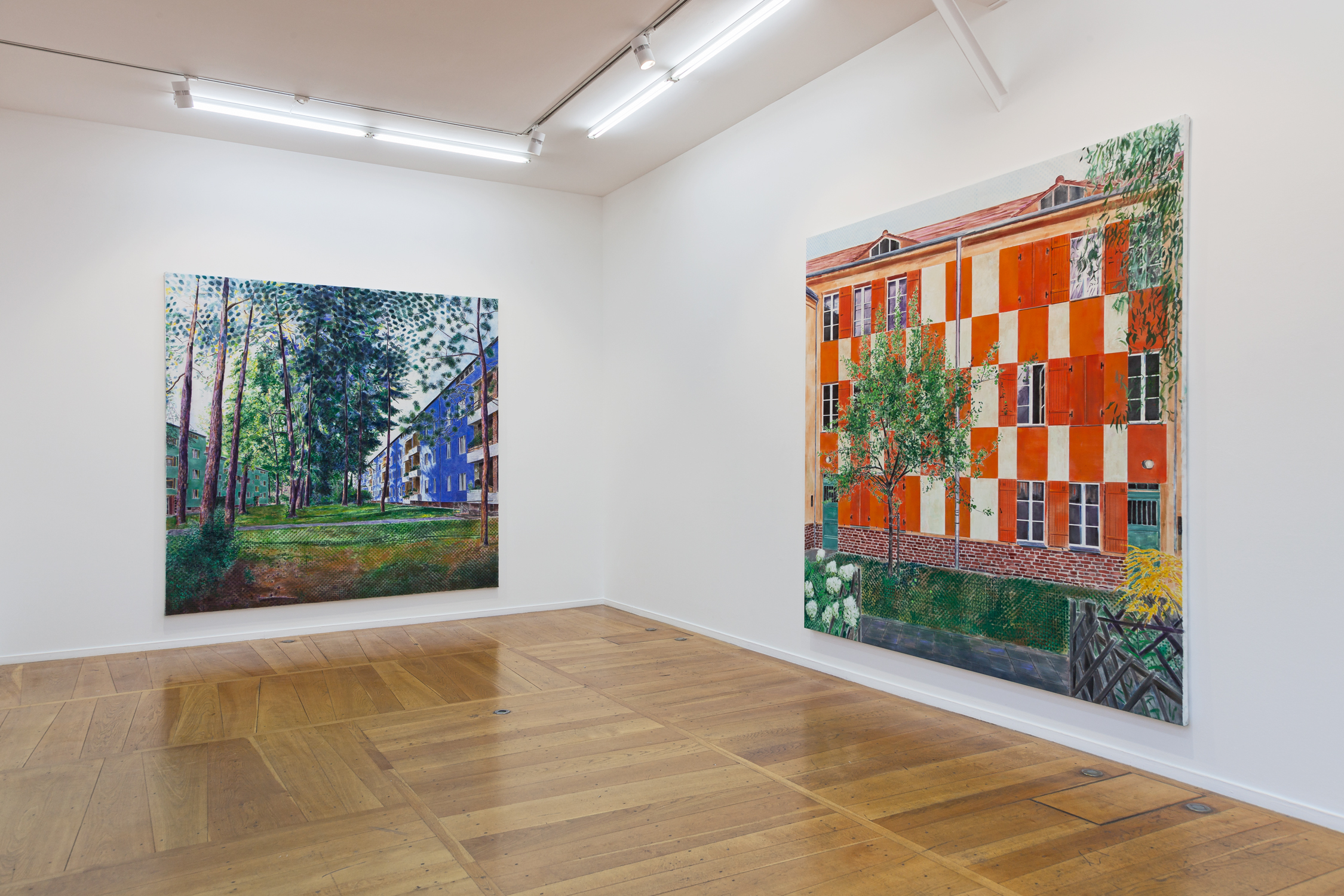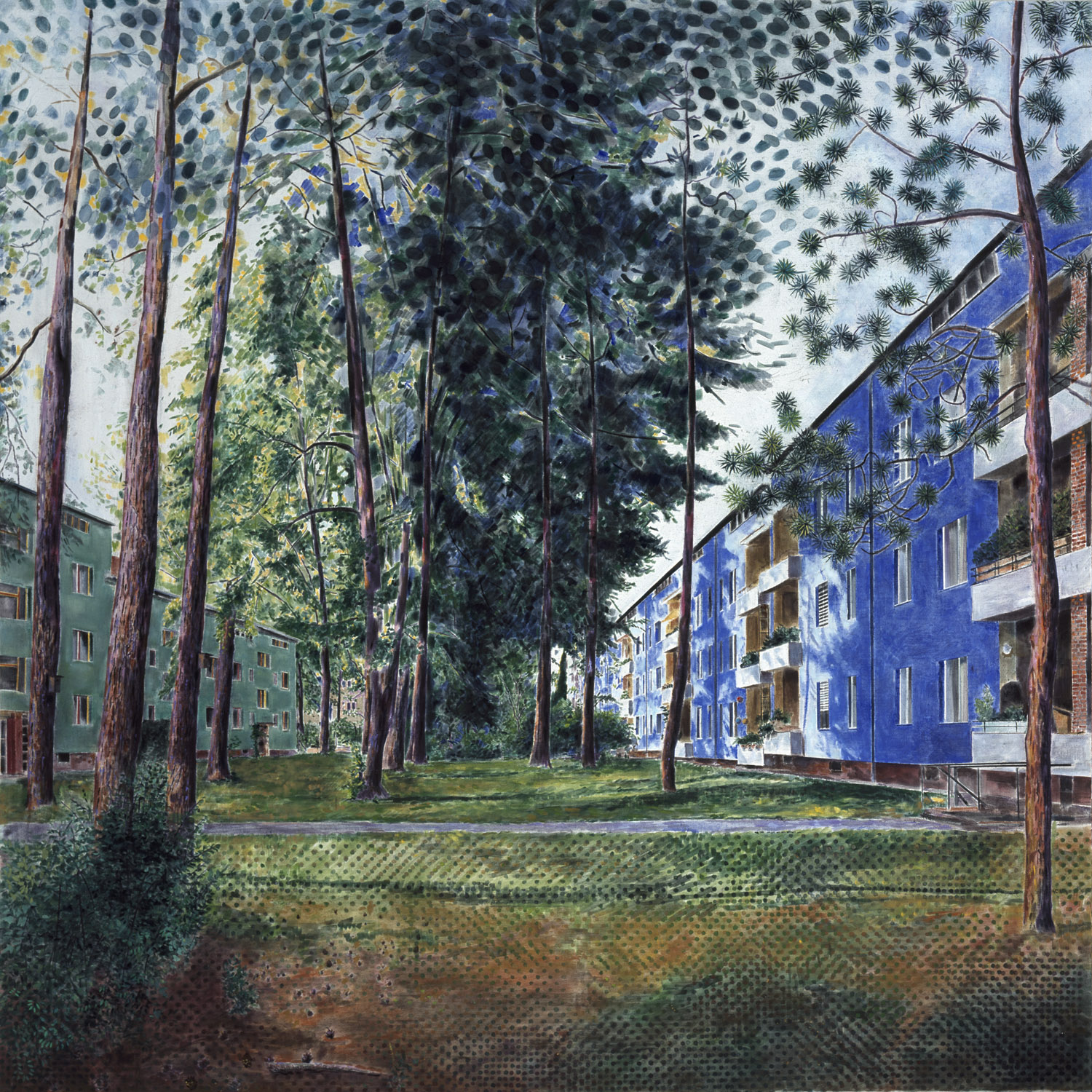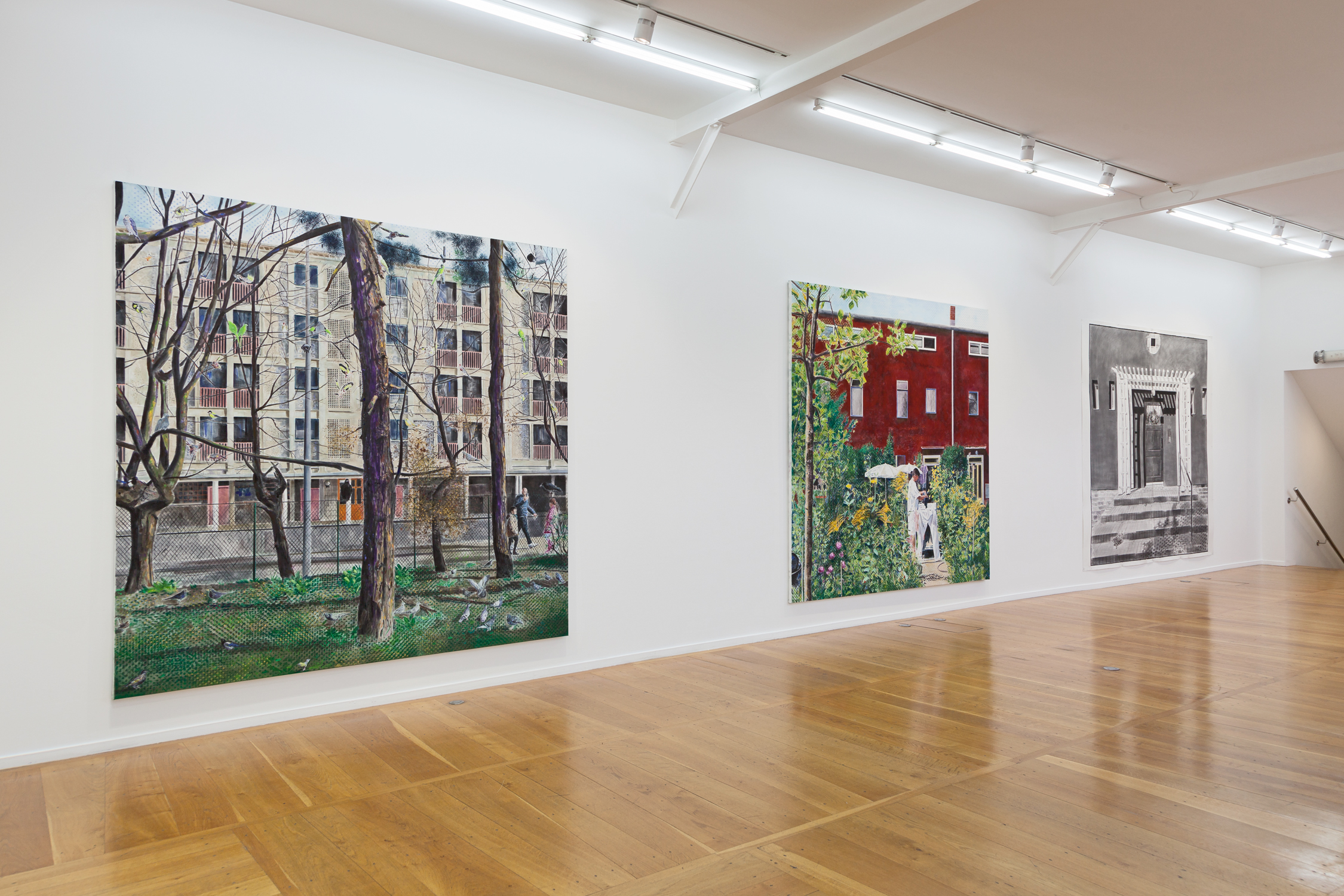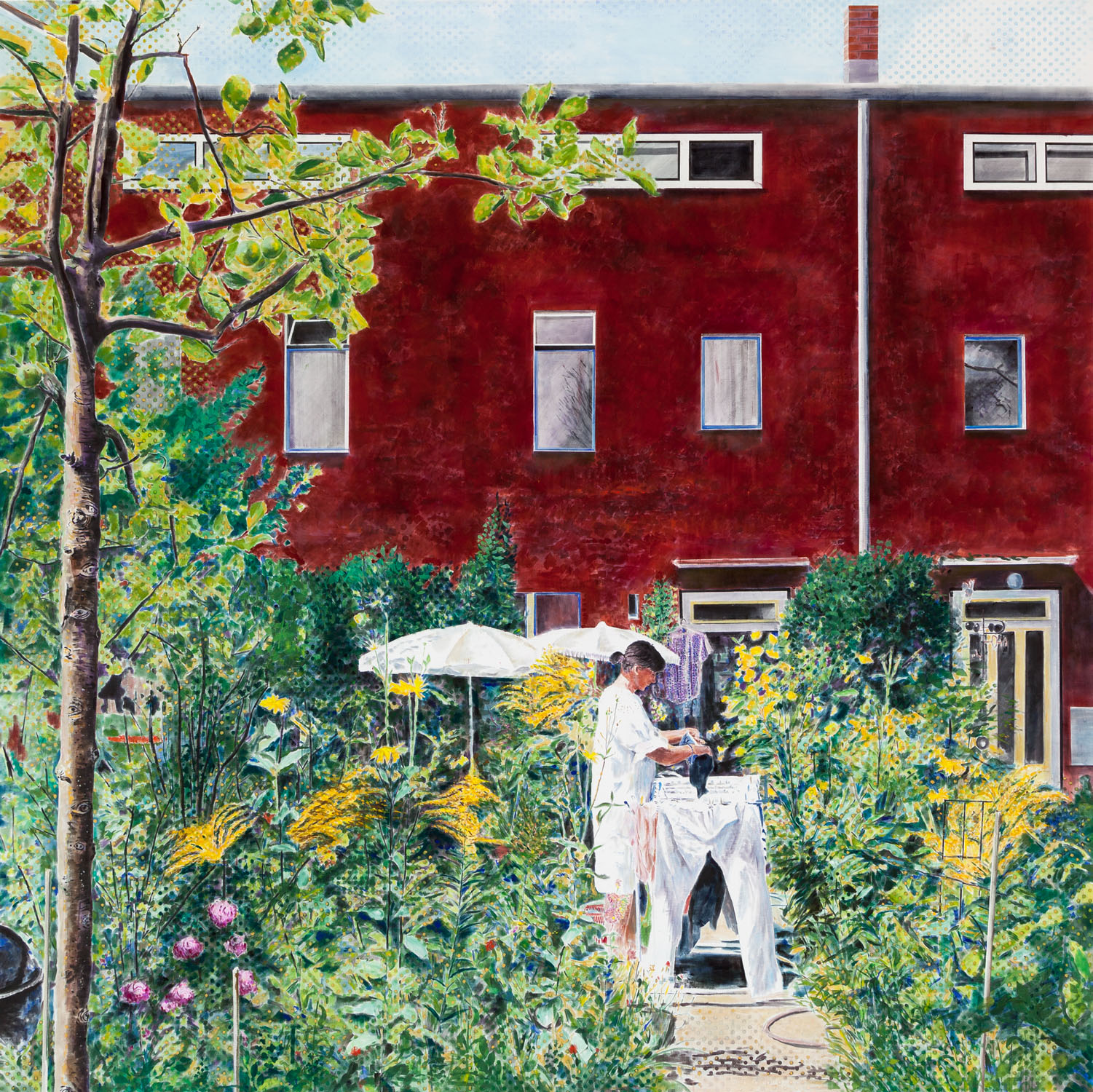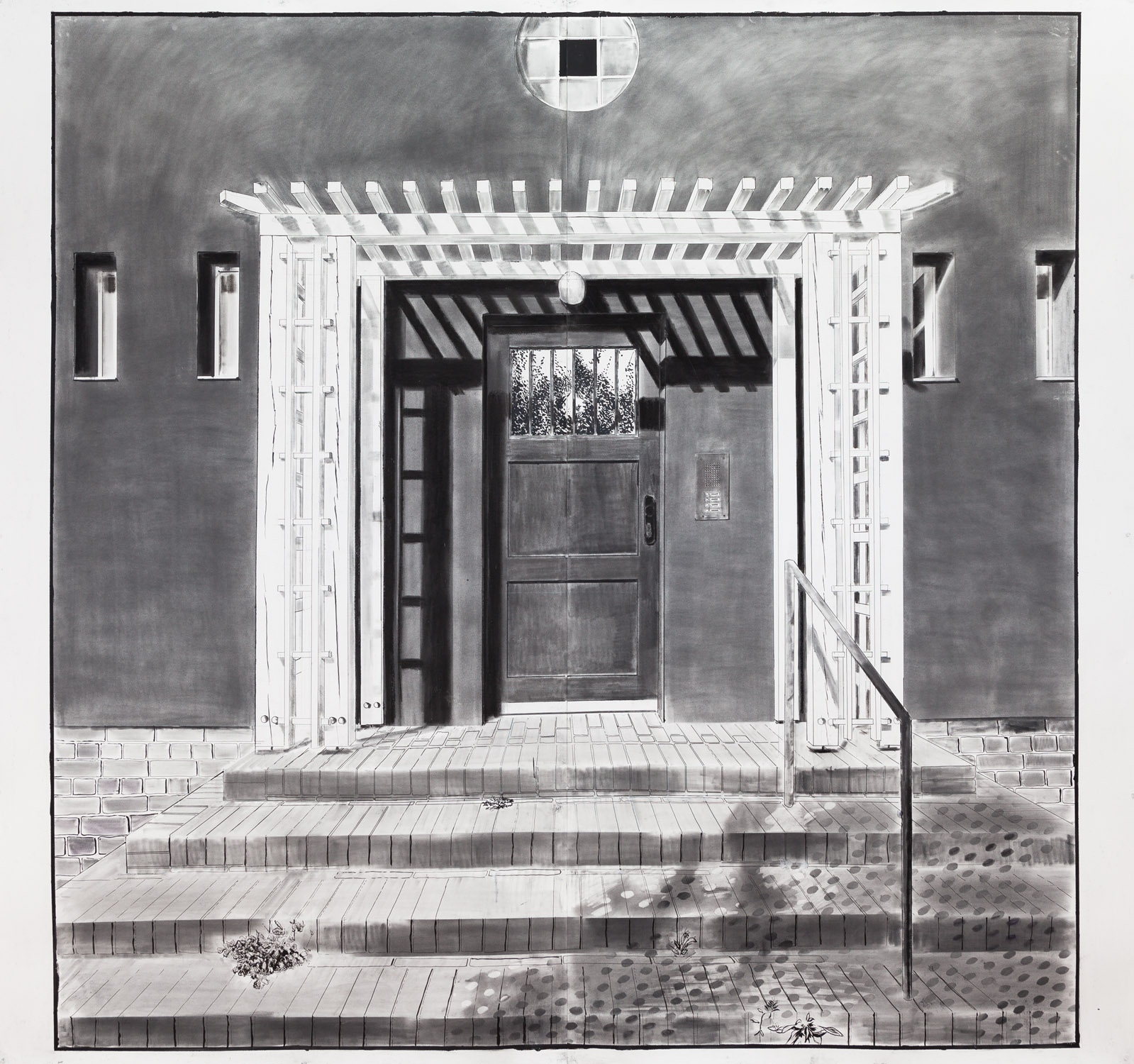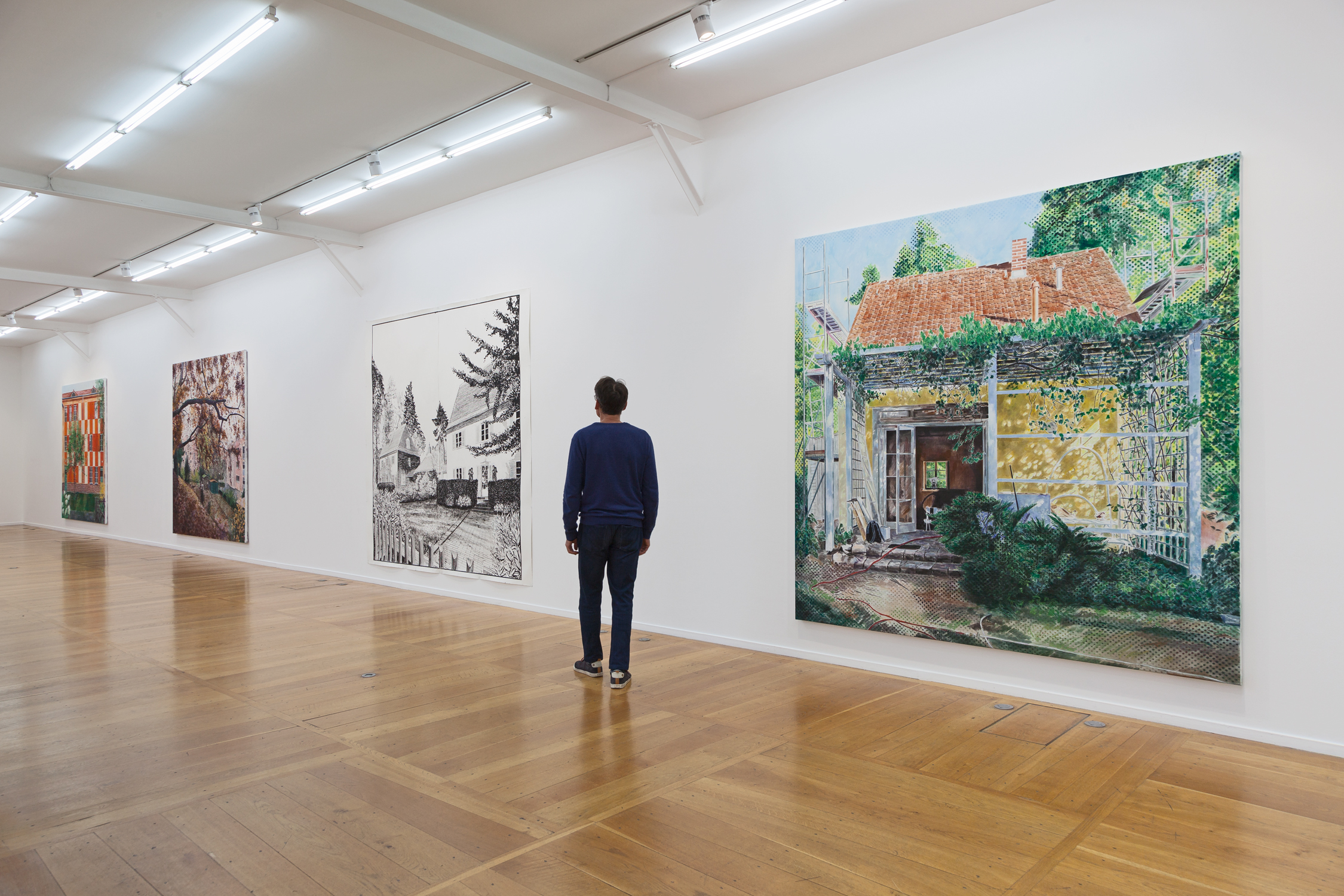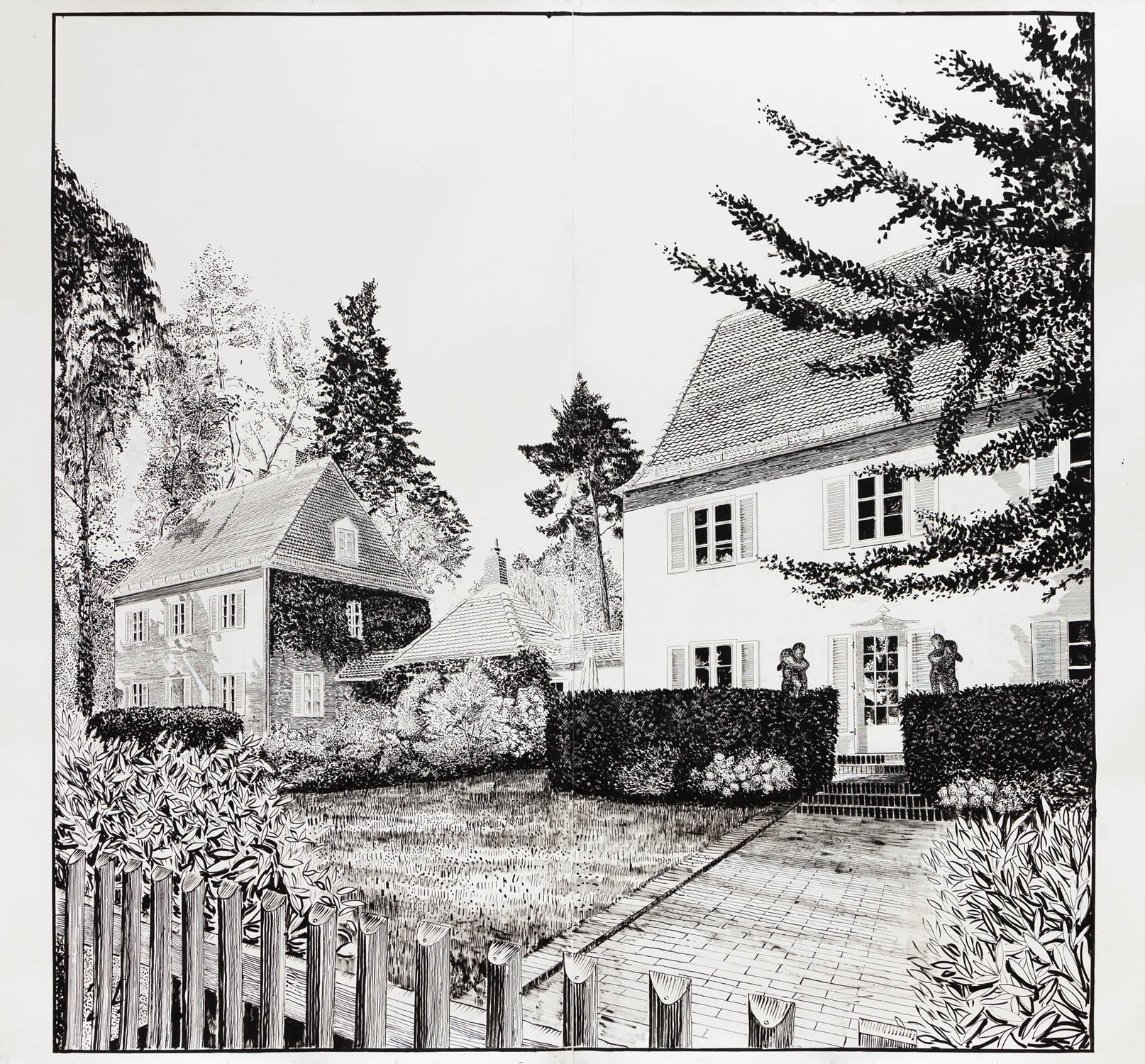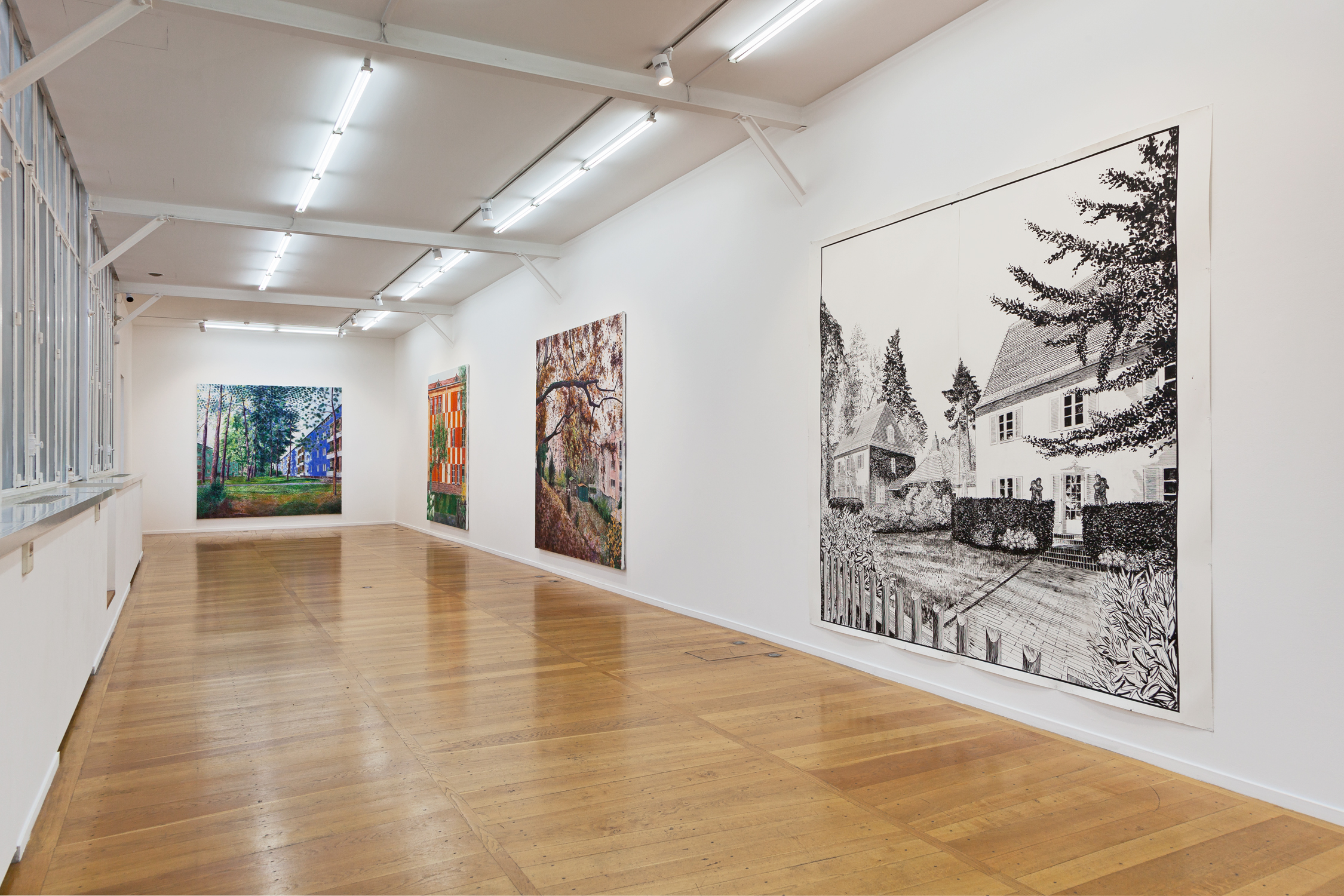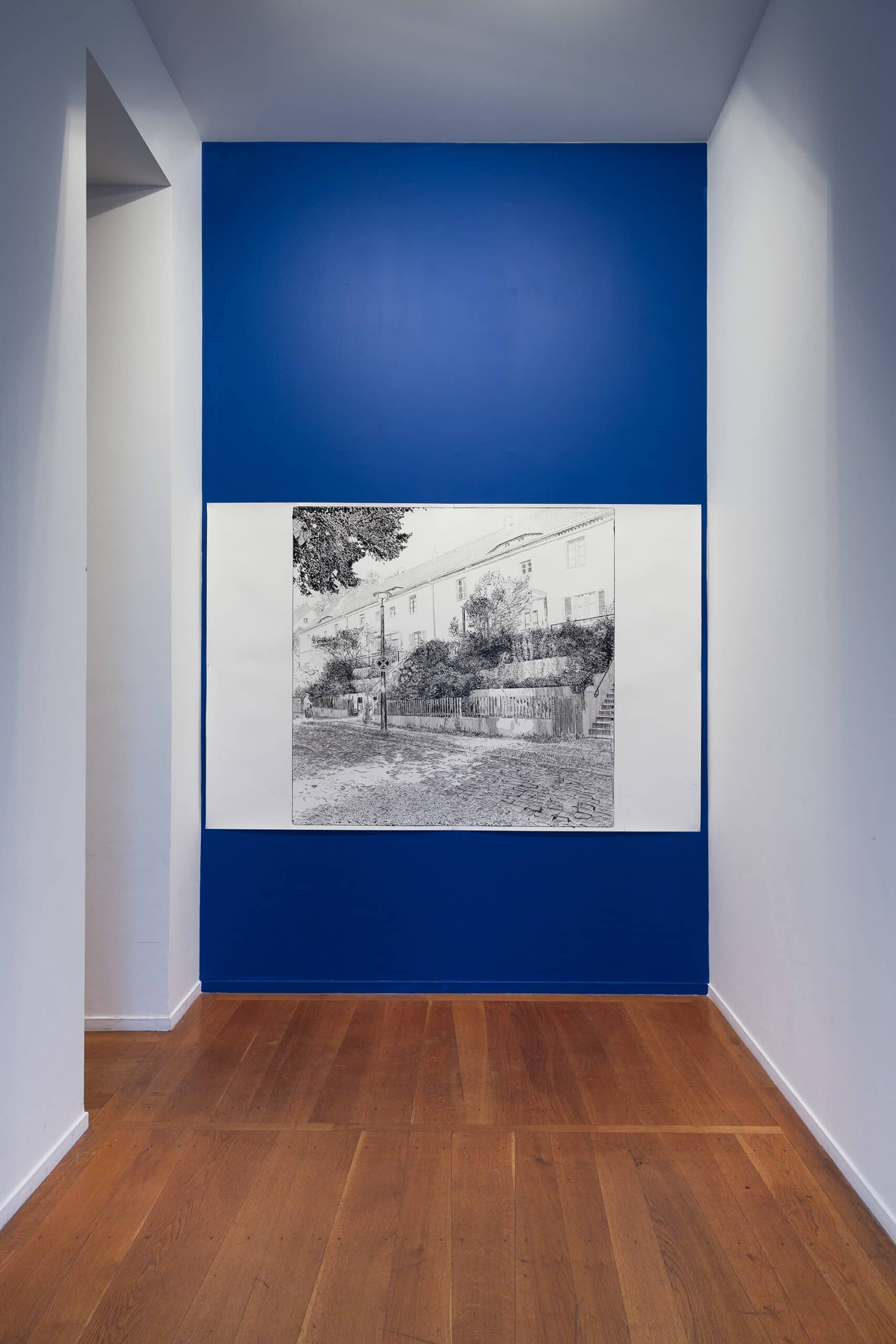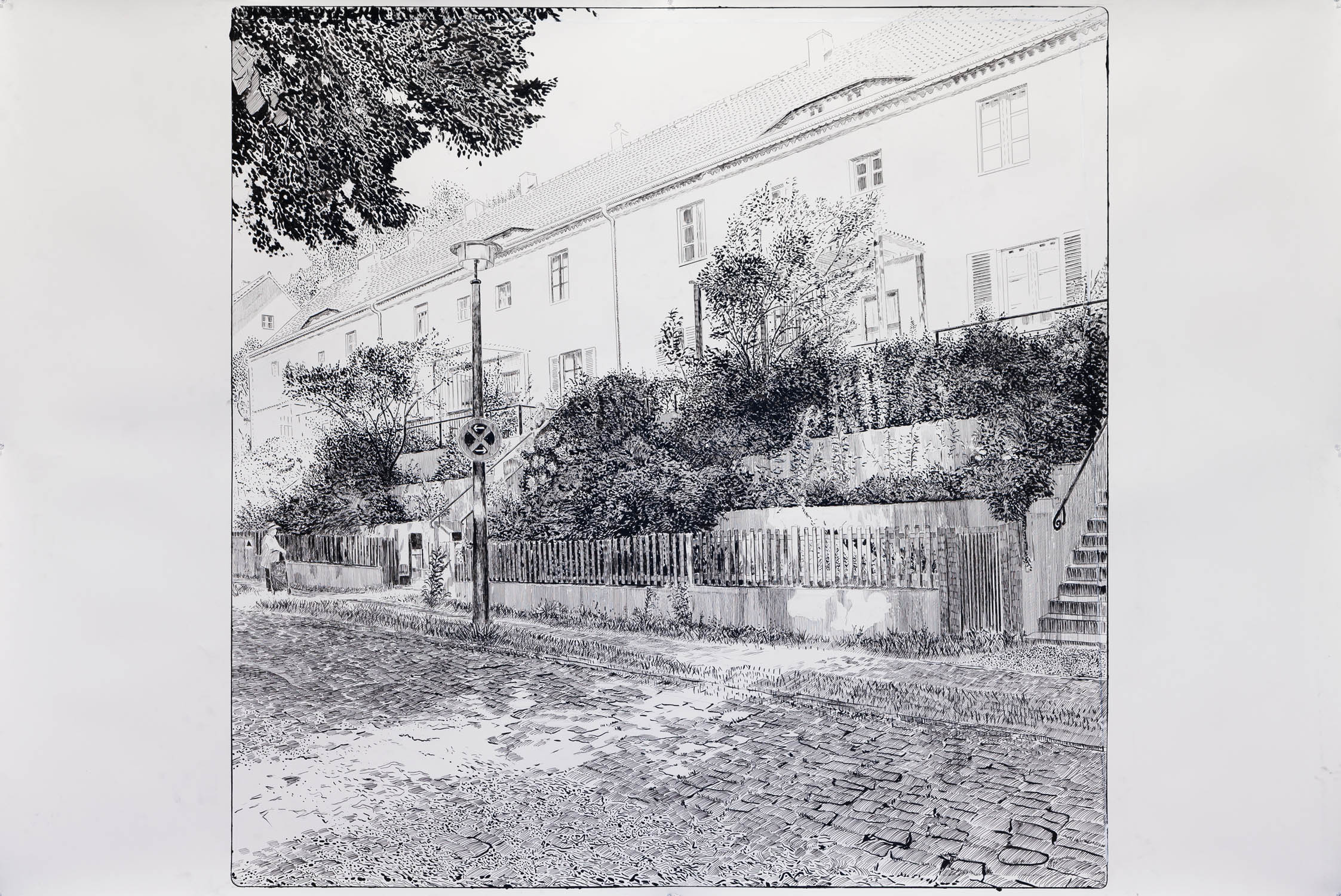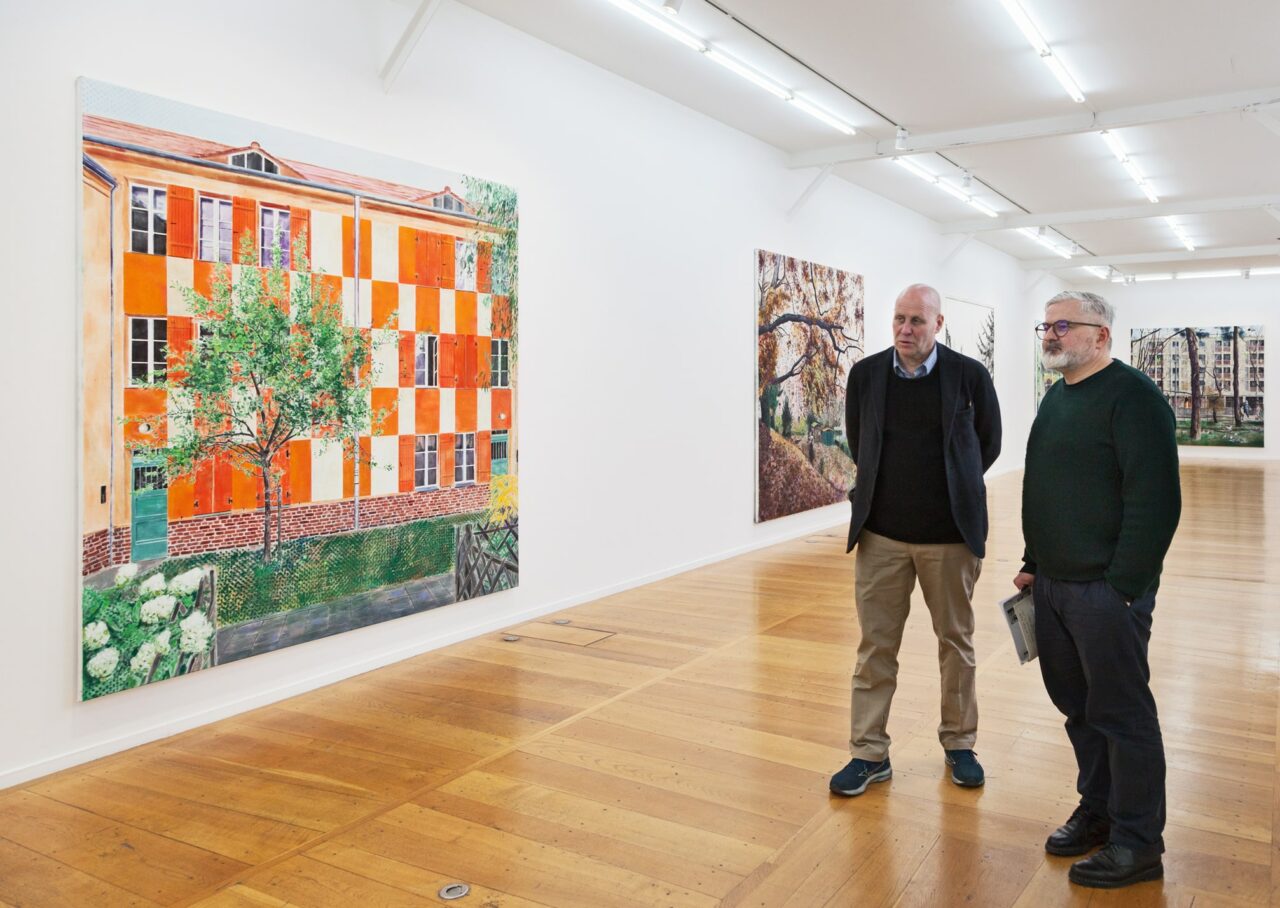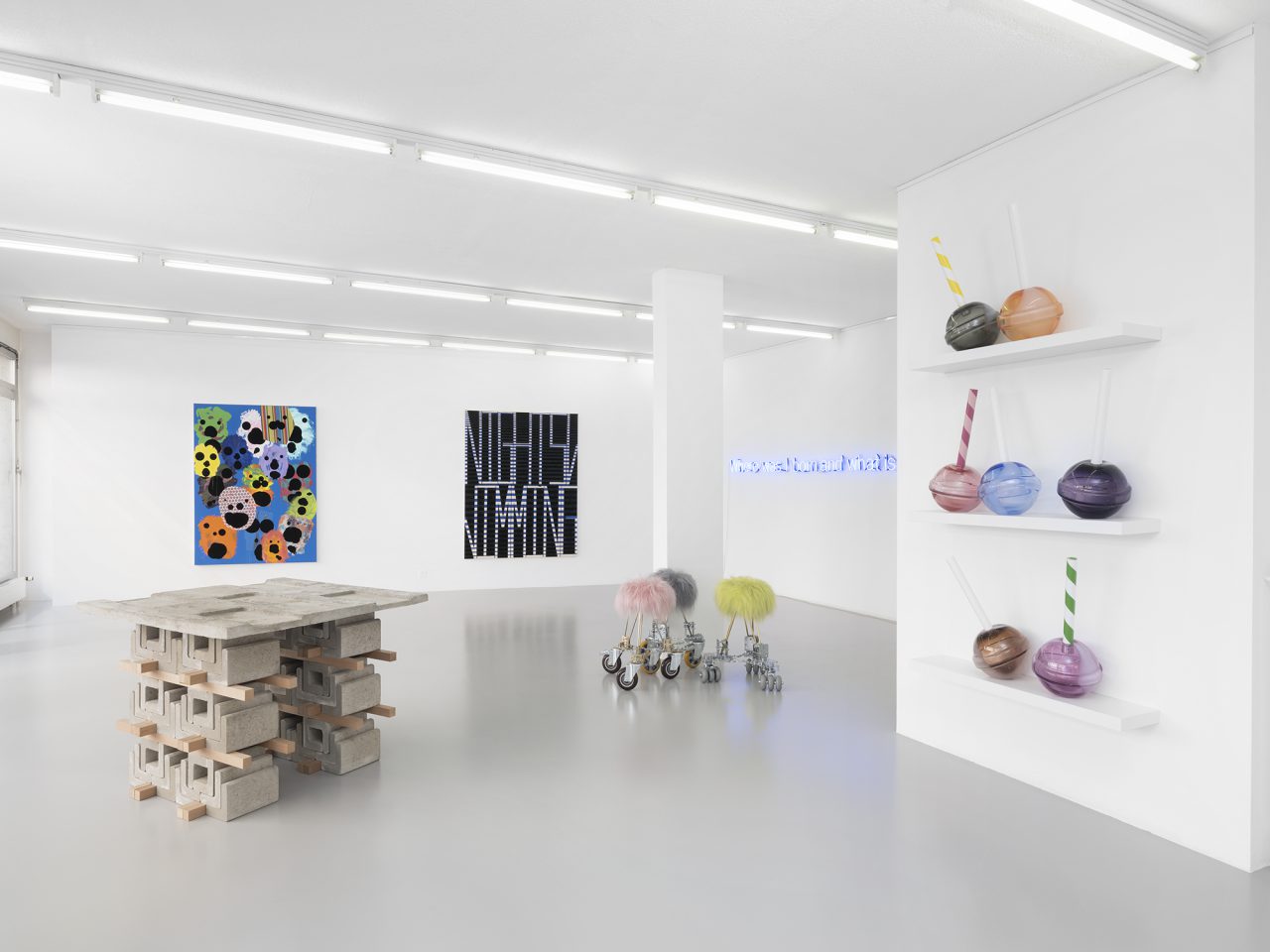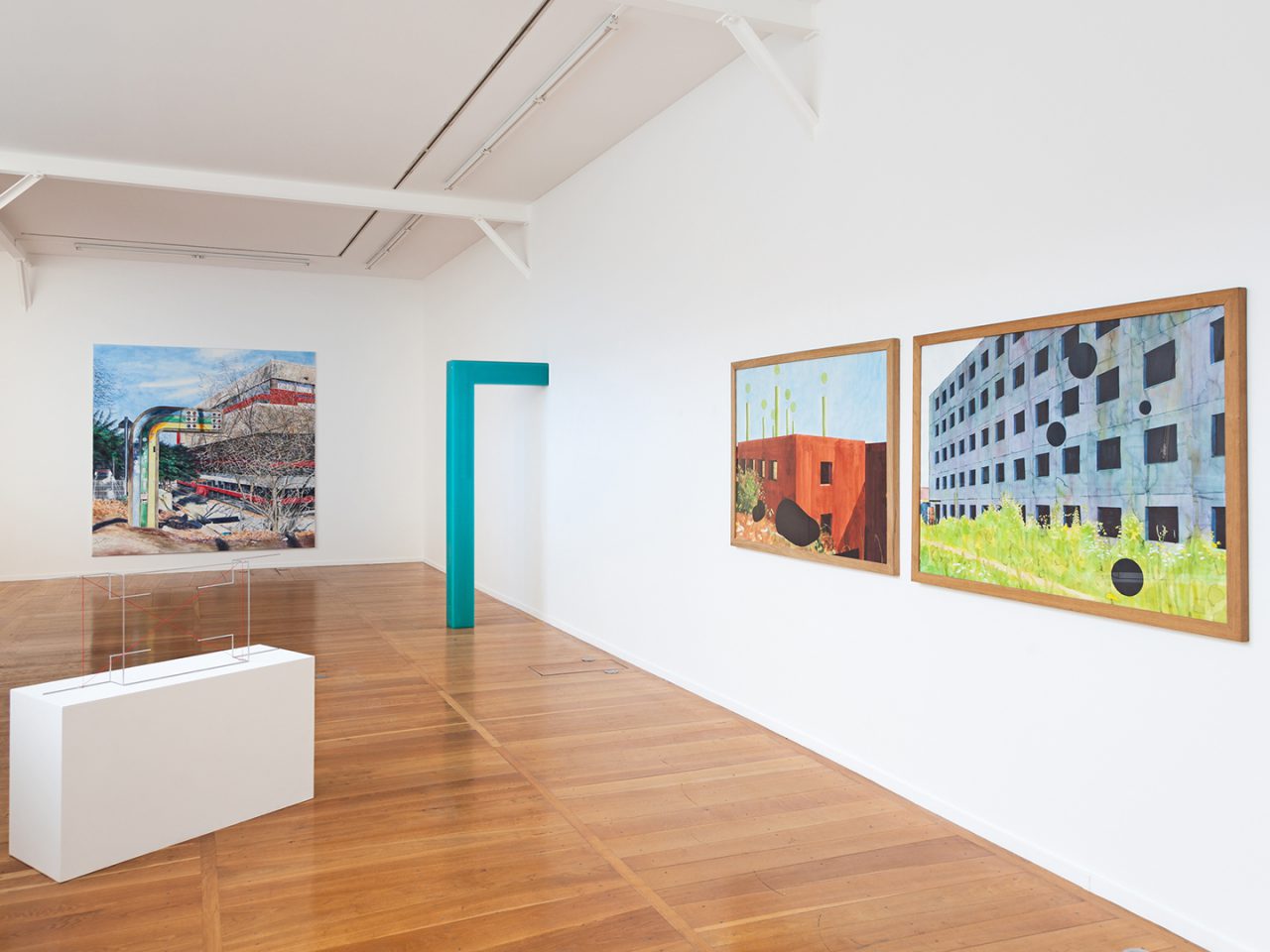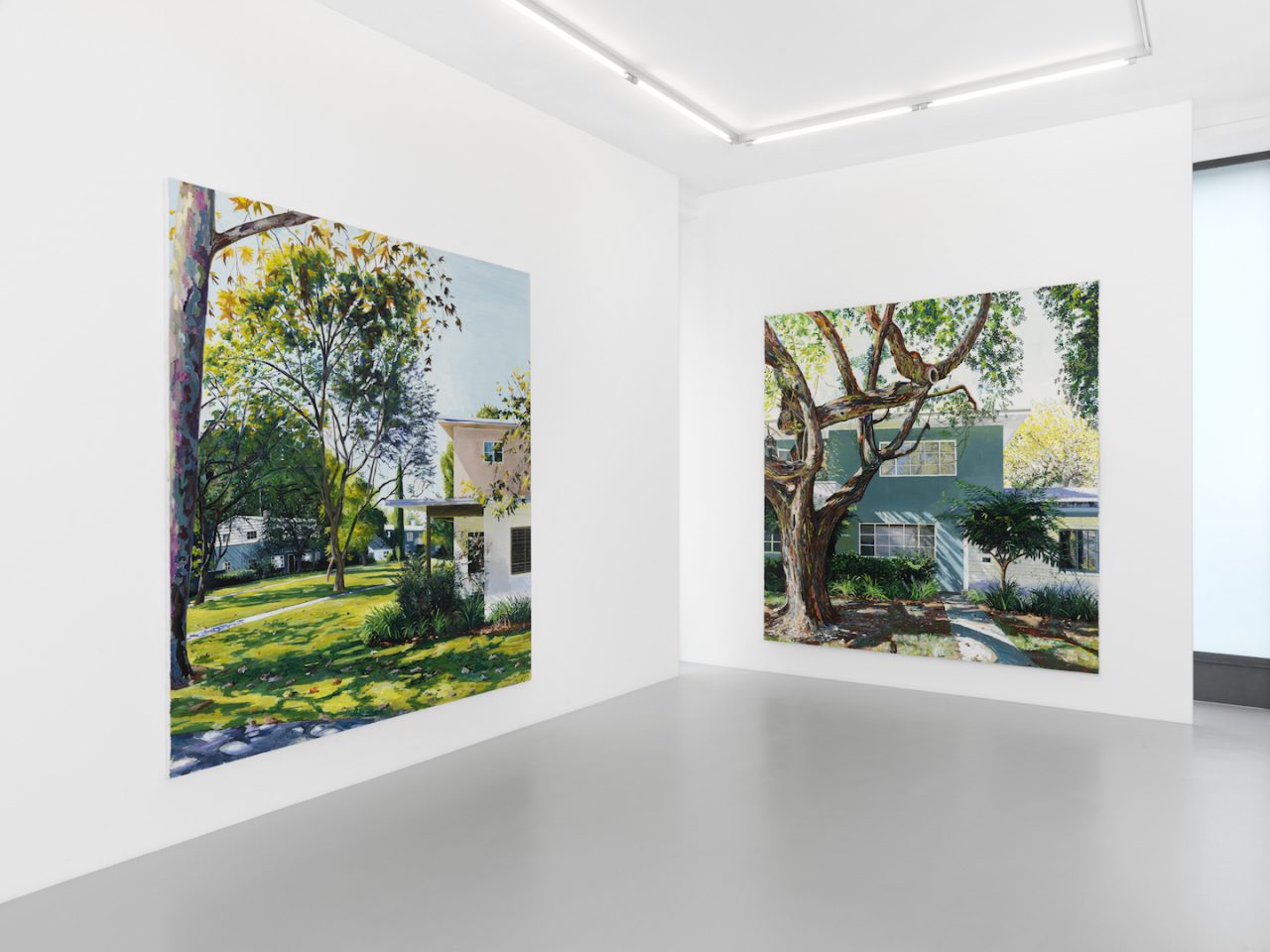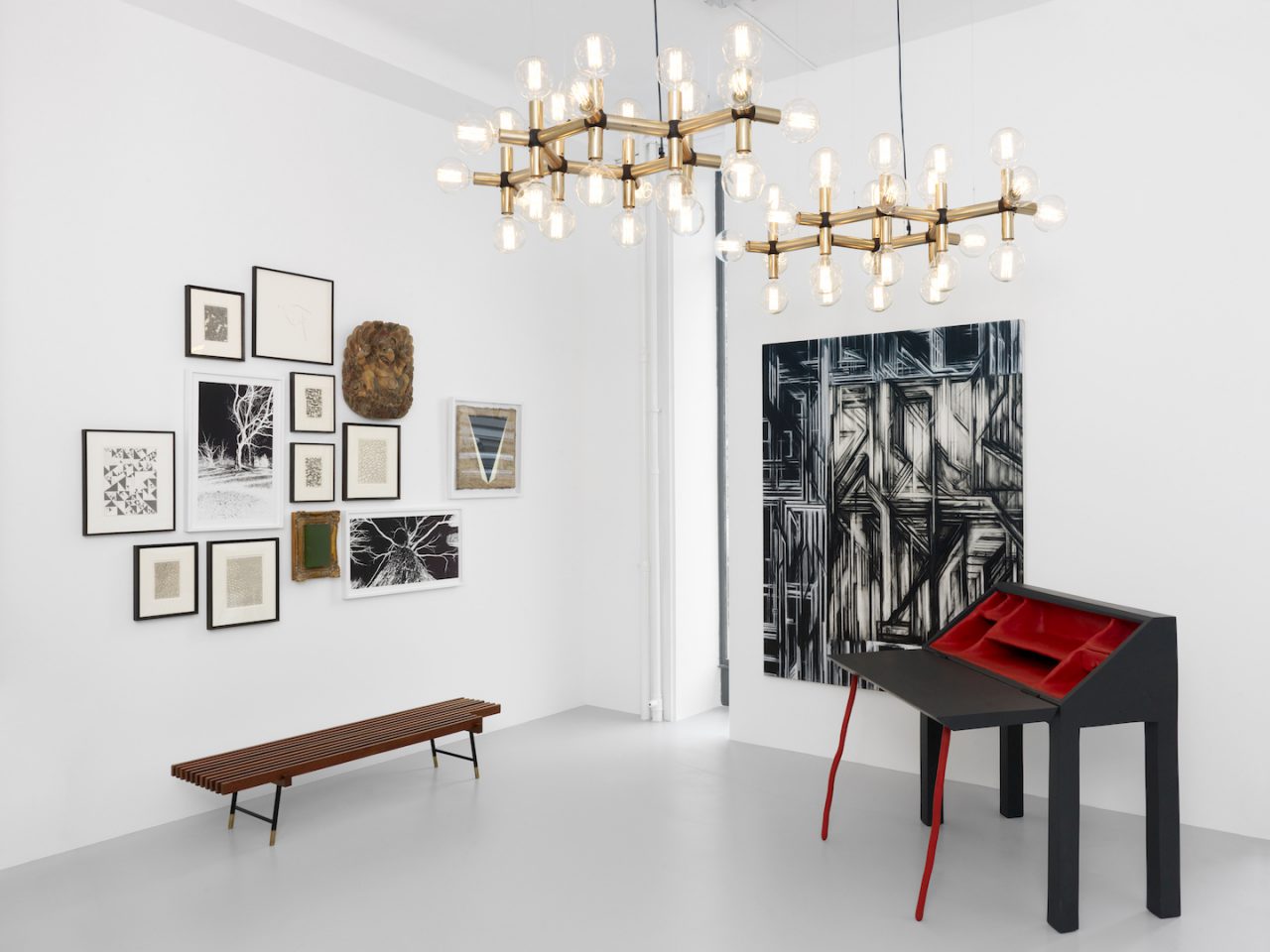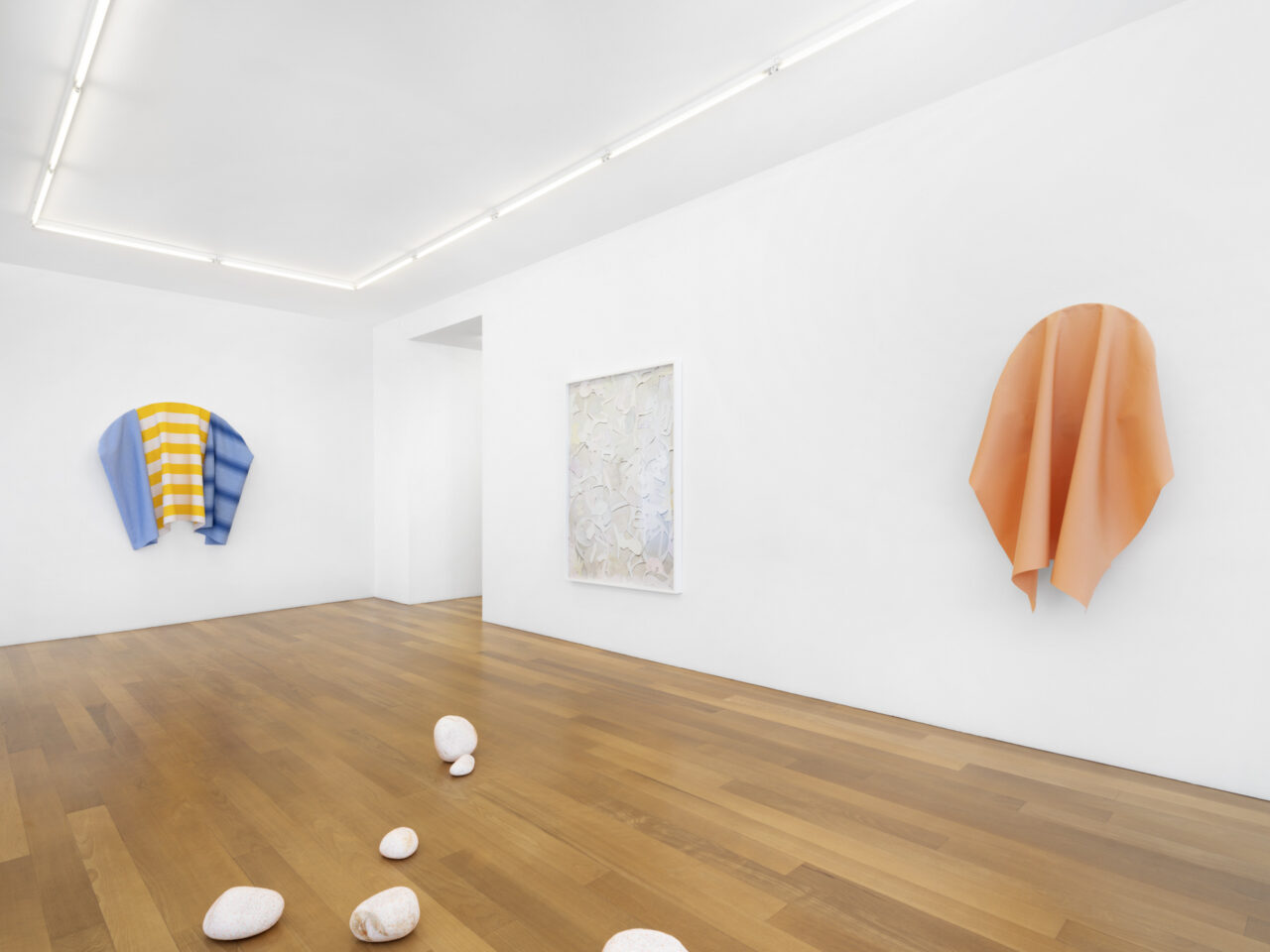Yves Bélorgey – Cités-jardins
Yves Bélorgey
Cités-jardins
07.01.23 → 04.03.23
Extended until March 4, 2023
Yves Bélorgey’s latest solo exhibition “Cités-Jardins” [Garden City Estates] presents for the first time in Paris his pigment paintings and embarks on an “investigation” into an architectural utopia that flourished in the 1920s and 1930s, but which today has been abandoned. This idea, almost visionary in scope, envisaged a “future town” as an alternative to the cacophony of the industrial age, and set out a model of a housing project that would be “closer to the land” and include a space to be cultivated and shared. By integrating a garden into a housing complex, it would allow its inhabitants an escape from suffocation as well as from alienation…
…Over a number of years, Yves Bélorgey’s practice has been punctuated by a series of small “revolutions” that he has sought to push further and further. Although he has remained faithful to the subject that has preoccupied him since the 1990s – the architecture of collective housing projects that he documents, following a programme initiated by a “fictitious public commission” – the methodical nature of his approach has been disrupted on several occasions. From 2018 onwards, Yves Bélorgey has been exploring a new technique that involves applying dry pigments directly on the canvas. This hybrid technique that brings painting closer to drawing, has engendered a powerful visual effect. The paintings appear to have been penetrated by light. The dry pigments cover the canvas in a velvety coat, which allows the colours to shine through even more vividly. Unsurprisingly, the colours in all their luminosity take on the role of a true protagonist and have a powerful impact on the subject represented. Indeed, Bruno Taut’s projects such as Onkel Toms Hutte or the Falkenberg city garden estate, where colour and vegetation play an essential role, are ideal subjects for pigment paintings, which above all, are compositions of colours. Moreover, for Taut, colour played a precise social role: that of breaking up the uniform organisation of the estate, bringing back an element of chaos, as well as diversity and life. Following in the footsteps of this German architect, Yves Bélorgey has transformed his exhibition into a powerful and light-filled manifesto that is articulated around the three primary colours: red, yellow and blue.
Another “revolution” that began as early as 2015, has allowed interiors to appear among the rhythmically repetitive facades that are sometimes modernist and at other times not. These private spaces have long remained implicit and out of view, hidden by the logic of photographic representation (which for Bélorgey, has always been a necessary stage in his working process: each new pictorial opus being systematically preceded by a collage composed of a variety of shots). The constraints of photography imply that the two states – interior and exterior – are mutually exclusive and impose a choice. Thus, the moment when the public space gives way to the beguiling intimacy of the domestic environment, by letting us enter someone’s home in complete confidence, marks a real conceptual shift. Of course, the two are linked, since for the artist, inhabiting a place is not just a private activity but a social one as well. Hence, the exterior and interior are reflected in each other, something that is particularly eloquently depicted in the painting Maison à Berlin Dahlewitz: where we find ourselves within a colourful space that recalls geometric abstraction and faithfully preserves the same modernist spirit that informs its exterior. The viewer however, cannot avoid recognising a change in tone: Yves Bélorgey’s interiors speak to us in a softer, more sentimental language, one that evokes a personal diary rather than a public archive.
The third change has involved the introduction of human (or not) figures, representing inhabitants and who appear more and more often in Yves Bélorgey’s urban landscapes. They add movement to the scenes and counteract the static or even immutable character of the buildings. In a similar way, in La Muette, around fifty birds have invaded the foreground of this building in the garden city estate of La Muette in Drancy (Paris suburbs), bringing a touch of effervescence and poetry to the scene.
Finally, the most recent revolution, even if aspects of it can be seen in older works, concerns the representation itself and its meta-discursive aspect. Yves Bélorgey has introduced an abstract element into his compositions, filtering the image depicted through a kind of latticework grid. This operates on several levels and renders the reflexive dimension of his paintings even more apparent. First of all, this grid creates a fascinating visual effect as the surface of the painting dissolves and reforms depending on the movement of the spectator. At the same time, the presence of the grid reinforces the link between Bélorgey’s painting and the medium of photography, for in photography it is a necessity, a material condition for the very existence of the reproduced image. Incorporating it in his paintings is thus a tribute, a reflexive statement on painting and a way of going back through the steps of his own practice and premises.
In exploring the areas between the lines of the grid, the “grey” areas and interstices, Yves Bélorgey’s painting raises issues around our relationship to painting, as it does with our relationship to the world. And perhaps, it does so even more forcefully here, by showing us this abandoned garden city estate project it seeks to resurrect by revealing to us these vegetable plots, workers gardens, etc. Indeed, it is impossible not to wonder why this project was abandoned, which in turn leads us into a maze of social, political and ecological questions… Confronting us with these not always comfortable realities, Yves Bélorgey’s works are themselves subjected to formal and pictorial interrogations, thus uncovering a critical dimension at the heart of his painting.
Yves Bélorgey (b.1960) lives and works in Montreuil in the Paris suburbs.
From the 1990s onwards Yves Bélorgey developed an interest in suburban landscapes, and more precisely the collective architecture of large housing estates built between 1950 and 1970. In response to a fictive public commission to “paint communal buildings as documents”, he began a vast painting project to create a methodical and nostalgic archive of an entire neglected segment of modernist architecture as well as an abandoned social project.
Yves Bélorgey’s work was subject of solo exhibitions in numerous institutions, such as: Le Printemps de Septembre, CIAM – La Fabrique, Toulouse, France (2021); Kunstverein Heilbronn, Germany (2019); Centre d’art Le19, Montbéliard, France (2017); Musée Régional d’Art Contemporain Languedoc-Roussillon, Sérignan (2012); Ulm Kunstlerhaus in Germany (2012); Musée National d’Art Contemporain, Bucarest, Roumania (2011). In 2012, the Mamco of Geneva has organized a first retrospective featuring almost a hundred of his artworks.
Public collections (selection): Mamco, Geneva, Switzerland; FNAC, Paris, France, FRAC Bretagne, FRAC Franche-Comté, FRAC Limousin, FRAC Pays de la Loire, FRAC Provence-Alpes-Côte d’Azur, Rhône-Alpes; Société Générale, Lyon, France.
Exhibition views
-
![Yves Bélorgey Xippas Paris 2023 08]()
Yves Bélorgey
Cités-jardins, exhibition view, Xippas Paris, January 7 - February 18, 2023
Courtesy of the artist and Xippas -
![YB022_24]()
Yves Bélorgey
Onkel Toms Hütte
Architecte : Bruno Taut
Berlin, December - January 2022
Pigment on canvas
240 x 240 cm -
![Yves Bélorgey Xippas Paris 2023 02]()
Yves Bélorgey
Cités-jardins, exhibition view, Xippas Paris, January 7 - February 18, 2023
Courtesy of the artist and Xippas -
![YB022_31]()
Yves Bélorgey
Jardin à Britz
October 2022
Pigment on canvas
240 x 240 cm -
![YB022_20]()
Yves Bélorgey
Cité Jardin de Falkenberg
Architecte : Bruno Taut
Construction : 1913…
Berlin, November 2022
China ink on paper
240 x 240 cm -
![Yves Bélorgey Xippas Paris 2023 05]()
Yves Bélorgey
Cités-jardins, exhibition view, Xippas Paris, January 7 - February 18, 2023
Courtesy of the artist and Xippas -
![YB022_19]()
Yves Bélorgey
Les maisons jumelles de la cité Jardin Hellerau
Architecte : Heinrich Tessenow
Construction : 1909 …
Dresde, Allemagne
China ink on paper
240 x 240 cm -
![Yves Bélorgey Xippas Paris 2023 06]()
Yves Bélorgey
Cités-jardins, exhibition view, Xippas Paris, January 7 - February 18, 2023
Courtesy of the artist and Xippas -
![Yves Bélorgey Xippas Paris 2023 01]()
Yves Bélorgey
Cités-jardins, exhibition view, Xippas Paris, January 7 - February 18, 2023
Courtesy of the artist and Xippas -
![YB022_18]()
Yves Bélorgey
Intérieur à Britz (Constance)
Berlin Britz
Architecte : Bruno Taut
Graphite on paper
150 x 150 cm
